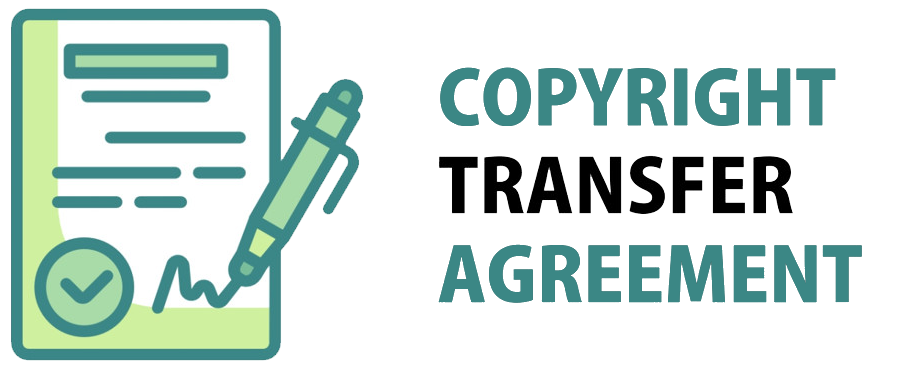Pengaruh Model Pembelajaran Kooperatif Tipe Inside Outside Circle (IOC) Terhadap Kemampuan Pemahaman Konsep Siswa Ditinjau Dari Motivasi Belajar Siswa Kelas VIII MTs Mathla’ul Anwar Panjang
 PDF Download: 255
PDF Download: 255
DOI:
https://doi.org/10.32665/james.v5i2.301Keywords:
Inside Outside Circle (IOC), Motivasi Belajar, Pemahaman Konsep, Motivation Learning, Concept UnderstandingAbstract
Penelitian ini bertujuan untuk mengetahui pengaruh model pembelajaran kooperatif tipe Inside Outside Circle (IOC) terhadap kemampuan pemahaman konsep siswa ditinjau dari motivasi belajar siswa kelas VIII MTs Mathla’ul Anwar Panjang. Jenis penelitian ini merupakan penelitian kuantitatif jenis eksperimen, menggunakan metode quasy experimental design dengan penelitian factorial 2 x 3. Sampel yang digunakan sebanyak 34 peserta didik yang diambil dengan teknik acak kelas. Teknik dalam pengumpulan data yang digunakan adalah tes kemampuan pemahaman konsep siswa dan angket motivasi belajar siswa. Teknik analisis data menggunakan uji normalitas dengan uji liliefors dan uji homogenitas dengan uji barlett. Uji hipotesis menggunakan uji analisis variansi dua jalan sel tak sama. Menurut hasil penelitian dan pembahasan perhitungan uji analisi variansi dua jalan sel tak sama diperoleh ditolak dan ditolak dan diterima. Berdasarkan hasil penelitian dapat disimpulkan bahwa: (1) terdapat pengaruh model pembelajaran kooperatif tipe IOC terhadap kemampuan pemahaman konsep, (2) terdapat pengaruh motivasi belajar terhadap kemampuan pemahaman konsep, (3) tidak terdapat interaksi antara model pembelajaran kooperatif tipe Inside Outside Circle (IOC) dengan motivasi belajar terhadap kemampuan pemahaman konsep.
References
S. Andriani, “Evaluasi CSE-UCLA pada Studi Proses Pembelajaran Matematika,” Al-Jabar J. Pendidik. Mat., vol. 6, no. 2, pp. 167–175, 2015.
D. Destiniar, J. Jumroh, and D. M. Sari, “Kemampuan Pemahaman Konsep Matematis Ditinjau Dari Self Efficacy Siswa Dan Model Pembelajaran Think Pair Share (Tps) Di Smp Negeri 20 Palembang,” J. Penelit. dan Pembelajaran Mat., vol. 12, no. 1, 2019, doi: 10.30870/jppm.v12i1.4859.
S. Ningsih, S. Andriani, “Penerapan Model Pembelajaran Inside Outside Circle Terhadap Pemahaman Konsep Siswa,” Mat. Educ. Sci., vol. 2, no. 2, pp. 88–94, 2017.
A. Shoimin, 68 Model Pembelajaran Inovatif dalam Kurikulum 2013. Yogyakarta: AR-Ruzz Media, 2014.
N. Rahmah and Rafika, “Model Pembelajaran Kooperatif Tipe Inside-Outside Circle,” Kelola J. Islam. Educ. Manag., vol. 2, no. 1, pp. 1–14, 2017.
A. M. Tama, A. Rinaldi, and S. Andriani, “Pemahaman Konsep Peserta Didik dengan Menggunakan Graded Response Models (GRM),” Desimal J. Mat., vol. 1, no. 1, p. 91, 2018, doi: 10.24042/djm.v1i1.2041.
D. D. Pratiwi, “Pembelajaran Learning Cycle 5e berbantuan GeoGebra terhadap Kemampuan Pemahaman Konsep Matematis,” Al-Jabar J. Pendidik. Mat., vol. 7, no. 9, pp. 191–202, 2016.
M. Wati, “Penerapan Model Pembelajaran Kooperatif Tipe Inside Outside Circle Pada Pembelajaran Matematika Siswa Kelas VIII SMP Negeri 9 Pariaman,” Karmapati, vol. 2, no. 6, pp. 1–5, 2016, [Online]. Available: http://pti.undiksha.ac.id/karmapati/files/Vol2no6/6.pdf.
N. K. Ekayuni1, Netriwati, and D. Anggraini, “Model Picture And Picture dengan Index Card Match terhadap Penguasaan Konsep Matematis Nur Khasanah Ekayuni , Netriwati , Dian Anggraini PENDAHULUAN Model pembelajaran Picture And Picture adalah suatu model pembelajaran yang menggunakan gambar dan dipasan,” Desimal J. Mat., vol. 1, no. 1, pp. 107–112, 2018.
Downloads
Published
How to Cite
Issue
Section
License
Copyright (c) 2022 Journal of Mathematics Education and Science

This work is licensed under a Creative Commons Attribution-NonCommercial-ShareAlike 4.0 International License.
Authors who publish with this journal agree to the following terms:
- Authors retain copyright and grant the journal right of first publication with the work simultaneously licensed under a Creative Commons Attribution License that allows others to share the work with an acknowledgment of the work's authorship and initial publication in this journal.
- Authors are able to enter into separate, additional contractual arrangements for the non-exclusive distribution of the journal's published version of the work (e.g., post it to an institutional repository or publish it in a book), with an acknowledgment of its initial publication in this journal.
- Authors are permitted and encouraged to post their work online (e.g., in institutional repositories or on their website) before and during the submission process, as it can lead to productive exchanges, as well as earlier and greater citation of published work
 PDF Download: 255
PDF Download: 255
















